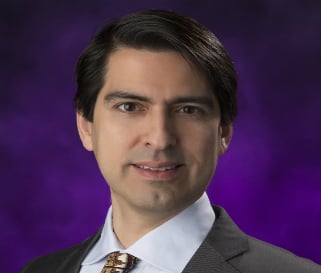With the recent addition of Oklahoma, there are now 30 states plus DC having legalized marijuana in some capacity. It is estimated that state legalized marijuana has a current total economic output of over $16 billion, with a projection of reaching $40 billion by the year 2021.
Whether you like it or not, in all probability your financial institution has marijuana proceeds flowing through its doors in some capacity. It is naive to believe otherwise.
Marijuana proceeds are being spent throughout our economy. One issue is that many bankers only view marijuana related businesses as dispensaries, cultivators, infused product manufacturers, and testing facilities. They fail to consider all of the other types of entities that derive revenue from the space. I use the generally accepted three tier classifications of marijuana related businesses (MRB’s): Tier I – Product touching, Tier II – Businesses directly supporting or whose primary customers are Tier I MRB’s, and Tier III – Those that have incidental business with Tier I and Tier II MRB’s. It is easiest to locate Tier I MRB’s as they are typically all licensed by the state. Tracking down and determining Tier II and III MRB’s become more difficult. If a lightbulb manufacturer is selling bulbs to a cultivator, are they a Tier II or a Tier III MRB? The short answer is “It depends”. There is not a FinCEN threshold on percentage of sales to MRB’s to make that determination and is often decided by the policies and procedures of each depository institution. Many “mainstream” businesses now support the marijuana industry. Landlords, lawyers, CPA’s, electricians, plumbers, bookkeepers, insurance companies, home improvement stores, pizza delivery, and numerous other businesses are providing products and services to MRB’s and are receiving proceeds from marijuana sales. You are already banking many of these ancillary businesses and those deposits are flowing through your institution.
Another issue is that of investment money. The marijuana industry has created a “green rush” of investor monies entering the space. It was reported that in the first 5 weeks of 2018, there were $1.23 billion dollars raised to back marijuana-related ventures. There are now even marijuana mutual funds and EFT’s for investors to participate. I reside in relatively small resort community and am constantly amazed by how many people that I meet that are invested in MRB’s. Many are typical business people such as real estate agents, photographers, retirees etc. and are not individuals that would fit my (previous) stereotype of who would be a marijuana investor. They are across all parts of life and demographics. As these individuals receive dividends and other types of investment payouts, they are depositing these monies in their personal and business accounts at your institution.
It is estimated that marijuana industry employs over 230,000 workers. Most of these people (As well as the MRB owners) have personal depository accounts in banks and credit unions across the United States and are depositing these monies in their accounts.
A final issue in this list that I wish to discuss is that of transparency. As background, according to the latest report from FinCEN (Data ending 31 March 2018), 411 depository institutions are actively banking MRB’s in the US. It is simply not enough. By my count, there are approximately 35 financial institutions in the U.S. that I would consider having significant MRB portfolios, with the remainder of the 411 holding only a hand full of accounts. Outside of our clients, the balance are using manual processes which are not scalable, prone to human error that will inevitably occur, and it is costly to add departments of FTE’s. This leaves 1,000’s of MRB’s without access to financial services. Because of this, a number of MRB’s feel compelled to be creative to obtain banking services. Shell companies and masking their true nature are a common tactic. I do not condone this activity, but I see it occurring in real life. There are many consulting companies, flower shops, and nurseries that are actually MRB’s in disguise. That being said, I know many MRB’s whose desire is full compliance and transparency and will do whatever it takes to obtain a banking relationship.
Let’s now discuss ways to determine if you have marijuana related activity in your institution. I will begin with the obvious: Ask. I recommend that in your account opening process and CIP that you ask the question: “Do you derive revenues from marijuana related activity?” Include this question in your on-going due diligence as businesses and beneficial ownership can change over time. For example, that lawyer that you have been banking the past 20 years may now be deriving significant MRB revenues. Secondly, most states publish their marijuana licensee’s. Take the business names and addresses from the state and compare them to your CIF file looking for matches. Thirdly, enhance your transaction monitoring process, especially as it pertains to cash. One can only sell so many “cars” to try to explain large cash deposits. I would conduct site visits on anything suspect. Finally, stop and smell the roses, or the cash in this case. Cash that has been around marijuana has a distinctive odor and is usually easy to spot.
What are my responsibilities as a financial institution after I have determined that I have marijuana related monies in my institution? Regarding product-touching state licensed Tier I MRB’s, you should have appropriate board approval, risk analysis, training, policies / procedures, and technology in place to bank these clients in a responsible, sustainable, and profitable manner. This also includes adhering to the FinCEN guidance from February of 2014 regarding providing financial services to marijuana related businesses as well as transparency with your regulators. Regarding those Tier II and III ancillary businesses and relationships, it really depends on a number of factors. Many of our clients take the FinCEN guidance very literally, and they file marijuana SAR’s based on marijuana derived revenue being deposited. Other institutions have established policy thresholds that define who and what they consider is a marijuana related business. The purpose of this article is to explain how marijuana proceeds have expanded to the point that it impacts all institutions regardless of size or location, and to help you identify existing MRB’s at your institution. This is the first of a two-part series with the next article focused on the operational aspects of banking Tier II and Tier III clients. I will discuss the specific risks associated with banking these types of MRB’s as well as ways to mitigate such risk. Regulatory expectations and real-world examples will also be presented. Feel free to contact me with any questions. www.hypur.com/contact







